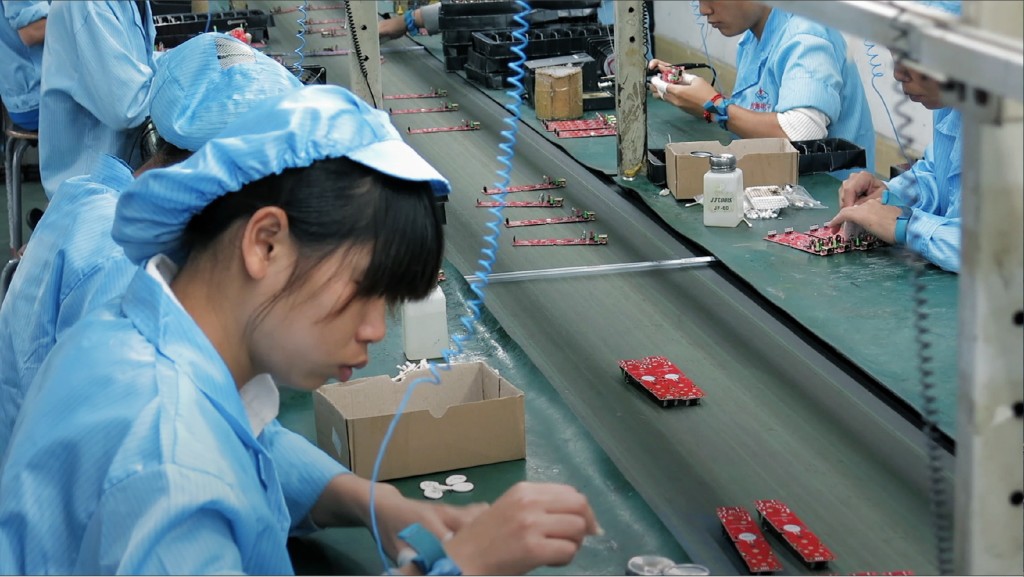
This year’s Mill Valley Film Festival features Death by Design, an important environmental exposé on the toxic impact of personal electronics. Most of us have heard that some very dangerous materials and some horrific working conditions are used in the manufacturing of our favorite devices. Death by Design is the first film to successfully tie it all together, with historical perspective, global sweep and a possible way out.
Death by Design begins with the dark side of Silicon Valley’s history, related by the sonorous voice of environmental pioneer Ted Smith, founder of the Silicon Valley Toxics Coalition. Smith takes us through the discovery that the supposedly clean semiconductor manufacturing industry had been polluting the drinking water in some Silicon Valley neighborhoods. Groundbreaking occupational lawyer Amanda Hawes shows us the heartbreak caused when humans ingested those toxics.
Pioneering environmental heroes, Smith and Hawes saw this coming before anyone else. Although Smith bemoans the centuries-long impact of toxic pollution and Hawes shows us the very personal cost of occupational exposure, the two played a pivotal role in Silicon Valley history – they saved the geographic Silicon Valley from becoming much more widely and permanently despoiled. Thanks to their efforts, Silicon Valley, ironically, is more attractive than ever for the workers and investors fueling the current tech boom.
However, economic globalization has allowed the electronics industry to simply export the environmental impact from California to developing nations, and Death by Design tours us through a tech chamber of horrors in China.
We learn that 20% of China’s arable land and 60% of its groundwater are already contaminated (not ALL the fault of high-tech). We visit the “recycling” of e-waste in Guiyu – an unimaginable industrial catastrophe. We throw stuff away, and Death by Design asks us to consider the question, “Where is away?”.
But not all of the environmental costs have been have been moved away from us. In Death by Design, we also meet scientists who fly through the sky, sampling the chemical composition of clouds and collecting aerosols; they can detect pollution in North America and trace it back to Asia.
Death by Design’s Chinese segments – in factories, homes and bodies of water – is especially impressive. What must be shrewdly obtained footage helps us understand the plight of workers employed by the suppliers to international tech companies, including the major Apple supplier Foxconn, whose workers can suffer through 12-hour days and 7-day weeks. Death by Design pins the labor cost at 1 percent of an iPhone’s price; the movie leaves the math for the viewers: if you triple a 1% labor cost, a $400 phone would sell for $408.
As fitting for a techie movie, Death by Design also brings us some geeks to show us that Apple designs the iPhone for an 18-month life; you can’t extend the life by replacing the battery or other parts because Apple locks the case with proprietary screws so we can’t open it up.
If there’s a particular Bad Guy in this story, it’s Apple. I became ever more conscious that I was watching Death by Design on an iPad with Apple ear buds.
One hopeful glimmer is the introduction to the Chinese environmental entrepreneur Ma Jun, who has compiled a database of environmental impacts as a tool to press for change from within China. Another is an Irish startup that has developed fair trade computers that are updatable and reusable; their cases are built from an unexpected raw material.
Director Sue Williams maintains the topical urgency without creating a screed. She also covers a lot of ground in a crisp 73 minutes. And, most impressively, Williams delivers the Chinese footage necessary to complete the story. Death by Design is one of the most important environmental documentaries – and one of the most watchable. It plays the Mill Valley Film Festival on October 7 and 11.

